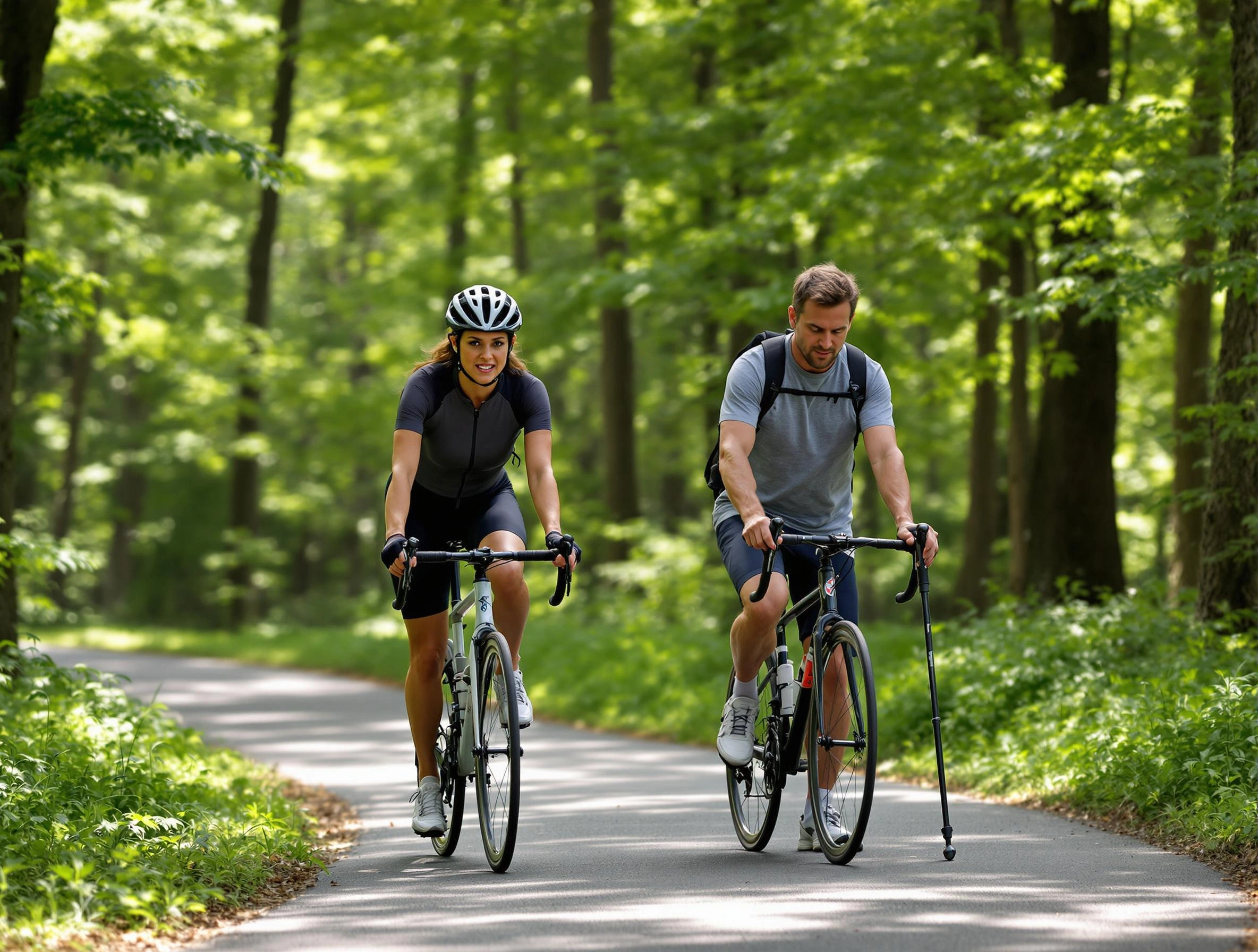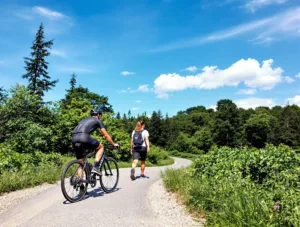The Ultimate Guide to Using Cycling for Effective Weight Loss
Introduction
In the quest for weight loss, many people turn to high-intensity workouts, restrictive diets, or expensive gym memberships. However, one of the most effective, enjoyable, and sustainable ways to shed pounds is cycling. Whether you’re riding outdoors or using a stationary bike, cycling burns calories, boosts metabolism, and strengthens muscles—all while being low-impact on joints.
But not all cycling is created equal when it comes to weight loss. Factors like bike setup, intensity, duration, and even gear shifting play a crucial role in maximizing fat burn. This comprehensive guide will explore how to optimize your cycling routine for weight loss, covering everything from proper bike adjustments to training strategies that keep the pounds coming off.
Why Cycling is an Excellent Choice for Weight Loss
1. High Calorie Burn Without Joint Stress
Cycling is a cardiovascular exercise that can burn between 400 to 1000 calories per hour, depending on intensity and body weight. Unlike running, which can strain knees and hips, cycling is low-impact, making it ideal for overweight individuals or those with joint issues.
2. Boosts Metabolism and Fat Burning
Regular cycling increases your metabolic rate, helping your body burn more calories even at rest. Studies show that cycling in moderate to high-intensity intervals enhances fat oxidation, making it an efficient way to target stubborn fat.
3. Builds Lean Muscle Mass
Cycling primarily engages the legs, glutes, and core, toning muscles while burning fat. More muscle mass means a higher resting metabolic rate, leading to continuous calorie burn.
4. Sustainable and Enjoyable
Unlike restrictive diets or grueling workouts, cycling can be a fun, social, and scenic activity. This increases adherence, which is crucial for long-term weight loss success.
Optimizing Your Bike for Maximum Weight Loss Efficiency
1. Choosing the Right Bike
- Road Bikes: Best for speed and long-distance rides on pavement.
- Mountain Bikes: Ideal for off-road terrain, engaging more muscle groups.
- Hybrid Bikes: A mix of road and mountain bikes, great for casual riders.
- Stationary Bikes: Perfect for indoor training with controlled resistance.
2. Proper Bike Fit to Prevent Injury and Improve Performance
- Seat Height: Your leg should have a slight bend (about 80-90% extension) at the bottom of the pedal stroke.
- Handlebar Position: Adjust for comfort—too low can strain your back, too high reduces efficiency.
- Pedal Alignment: Use clipless pedals or toe cages to engage more muscles efficiently.
3. Gear Shifting for Optimal Fat Burn
- Higher Resistance (Harder Gears): Builds muscle and burns more calories but may reduce speed.
- Lower Resistance (Easier Gears): Allows faster pedaling, improving cardiovascular endurance.
- Mix It Up: Alternate between high and low resistance to keep metabolism elevated.
Best Cycling Workouts for Weight Loss
1. Steady-State Cardio (Moderate Intensity)
- How: Maintain a consistent pace (60-70% max heart rate) for 45-60 minutes.
- Benefits: Great for beginners, improves endurance, and burns fat efficiently.
2. High-Intensity Interval Training (HIIT) on a Bike
- How: Alternate between 30 seconds of sprinting (90% effort) and 1-2 minutes of easy cycling. Repeat for 20-30 minutes.
- Benefits: Burns more calories in less time and increases post-workout fat burn (EPOC effect).
3. Hill Climbs (Outdoor or Increased Resistance Indoors)
- How: Find a steep incline or set your stationary bike to high resistance. Pedal hard for 2-5 minutes, then recover.
- Benefits: Builds leg strength and torches calories quickly.
4. Long-Distance Endurance Rides
- How: Ride at a comfortable pace for 90+ minutes.
- Benefits: Teaches the body to use fat as fuel and improves stamina.
Nutrition and Hydration for Cycling Weight Loss
1. Pre-Ride Fueling
- 30-60 minutes before: Eat a small carb-rich snack (banana, oatmeal, or toast) for energy.
- Avoid heavy meals: They can cause sluggishness or cramps.
2. Hydration Strategies
- Before: Drink 16-20 oz of water 1-2 hours before riding.
- During: Sip 7-10 oz every 10-20 minutes to prevent dehydration.
- After: Replenish with electrolytes if riding for over an hour.
3. Post-Ride Recovery for Fat Loss
- Protein: Helps muscle repair (e.g., chicken, eggs, protein shake).
- Healthy Carbs: Replenish glycogen (e.g., quinoa, sweet potatoes).
- Avoid Overeating: Track calories to ensure a deficit for weight loss.
Common Mistakes That Slow Weight Loss Progress
1. Riding at the Same Pace Every Time
- Fix: Incorporate intervals, hills, and varied resistance to challenge the body.
2. Poor Bike Fit Leading to Inefficient Pedaling
- Fix: Adjust seat height and handlebars for optimal power transfer.
3. Neglecting Strength Training
- Fix: Add squats, lunges, and core exercises 2-3 times a week to boost cycling performance.
4. Overestimating Calories Burned
- Fix: Use a heart rate monitor or cycling app for accurate tracking.
Final Tips to Maximize Weight Loss Through Cycling
- Be Consistent: Aim for at least 3-5 rides per week for steady progress.
- Mix Up Workouts: Combine endurance, HIIT, and strength training.
- Track Progress: Use apps like Strava or MyFitnessPal to monitor rides and nutrition.
- Rest and Recover: Muscles grow and burn fat during recovery—don’t overtrain.
- Enjoy the Ride: Choose scenic routes or join group rides to stay motivated.
Conclusion
Cycling is one of the most effective and enjoyable ways to lose weight, offering a perfect blend of calorie burn, muscle toning, and cardiovascular benefits. By optimizing your bike setup, varying your workouts, and fueling properly, you can turn every ride into a powerful fat-burning session.
Remember, weight loss is a journey—consistency and smart training will yield the best results. So, adjust your seat, shift those gears, and pedal your way to a healthier, leaner you!
Would you like personalized cycling plans or additional tips? Let us know in the comments! 🚴♂️💨









Add comment